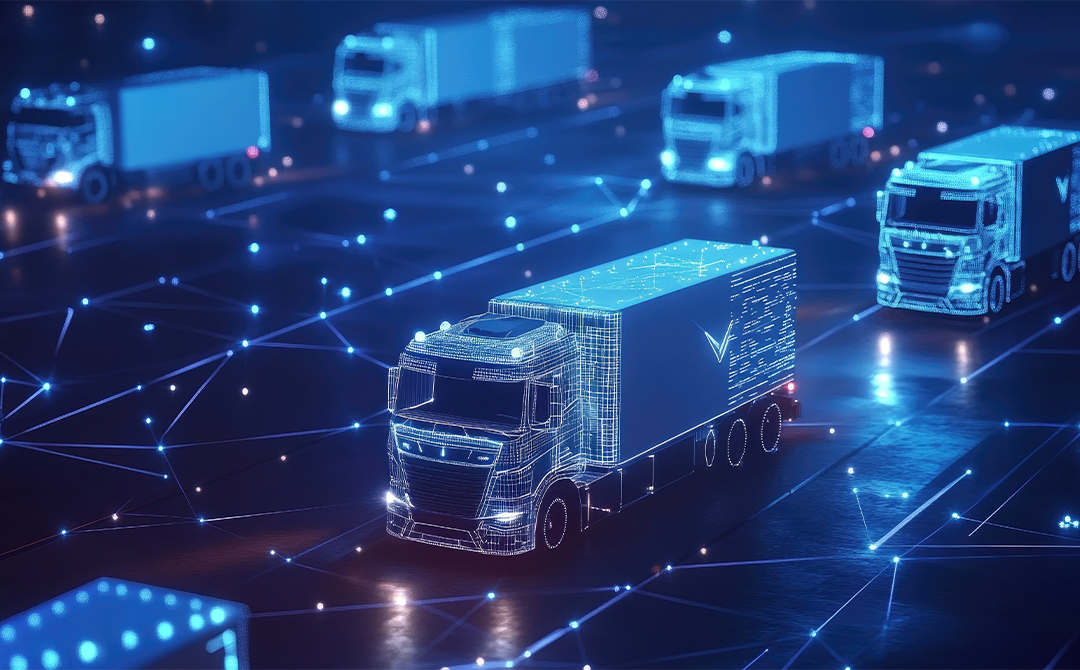
You’ve probably never heard anyone say, “I love this brand, they've got the best transportation management system.” And honestly, why would you? It’s not the kind of thing customers think about. Until something goes wrong. But if you're in the business of moving goods, whether you're a retailer, manufacturer, or logistics provider, you know that when your TMS falters, everything else does too. Missed deliveries, escalating freight costs, and frustrated customers constantly checking tracking updates are just the beginning. That’s why the Transportation Management System (TMS) is no longer a “nice-to-have” buried in IT budgets. It’s a core part of staying competitive.
What Is a Transportation Management System, and Why Is It Important?
A Transportation Management System (TMS) is a platform that helps businesses plan, execute, and optimize the physical movement of goods. It acts as the control tower for freight and logistics operations, ensuring that shipments get from point A to point B in the most efficient, cost-effective way possible.
Far beyond basic shipment planning, a modern TMS integrates with warehouse systems, ERP platforms, and order management tools to create a connected supply chain ecosystem. It delivers visibility across every leg of the journey, enabling businesses to reduce costs, improve delivery performance, and strengthen relationships with carriers.
What sets a TMS apart is its ability to combine artificial intelligence, advanced analytics, and seamless integrations to drive smarter, faster decisions. With real-time insights and predictive capabilities, companies gain greater control over their logistics strategy, improving agility, responsiveness, and efficiency at scale. For businesses handling complex distribution networks or high shipping volumes, a TMS is essential. It aligns logistics execution with strategic goals, helping organizations stay ahead in a fast-changing, demand-driven marketplace. In cases where shipping delays and cost spikes are the norm, an automated transportation management system supply chain can deliver great advantages:
- Streamlined carrier selection and rate negotiation
- Reduced transportation spend
- Improved on-time delivery rates
- Better customer experience
- Increased visibility and control
Who Needs a Transportation Management System?
A TMS is critical for any enterprise where logistics can directly impact costs, customer experience (CX), or operational resilience. It’s not just about shipping products, it’s about turning freight complexity into a competitive advantage. Key adopters may include:
- CPG & Food/Beverage
- Manufacturers
- Retailers and eCommerce companies
- Distributors & Wholesalers
- 3PL and 4PL providers
- Healthcare, pharma, and cold-chain operators
TMS adoption is highest in sectors where logistics are particularly complex. For example, the manufacturing sector alone accounts for over one-third of TMS deployments. Even smaller companies with complex shipping needs can benefit from TMS systems, especially as supply chain disruptions and customer demands become more frequent and unpredictable.
How Does a Transportation Management System Work?
At its core, a Transportation Management System acts like a command center for everything related to moving freight. It brings structure, visibility, and intelligence to what can otherwise be a chaotic process. Here’s a simplified breakdown of how a typical TMS system works:
1. Planning and Optimization
Once an order is created in your ERP or OMS, the TMS kicks in. It evaluates available carriers, routes, delivery timelines, and costs to determine the best possible shipment plan. This includes consolidating loads, sequencing deliveries, and avoiding empty miles. Advanced systems use AI-powered algorithms to optimize for fuel costs, carbon footprint, or customer delivery preferences, all in real time.
2. Execution
After planning, the TMS automatically communicates with carriers. It books shipments, generates shipping labels and documentation, and updates warehouse teams on dispatch schedules. This stage is often fully automated in an automated transportation management system, minimizing manual errors.
3. Tracking and Visibility
Once goods are on the move, the TMS monitors shipment status through GPS or carrier integrations. If there’s a delay or route deviation, it flags it. This real-time tracking ensures stakeholders, from supply chain managers to customers, stay informed without chasing updates.
4. Settlement and Billing
After delivery, the TMS reconciles freight invoices, checks for discrepancies, and pushes data to accounting systems. With e-invoicing and audit trails, it simplifies compliance and financial accuracy.
5. Analytics and Continuous Improvement
Modern TMS systems in logistics don’t just stop at moving goods. They sense demand, analyze lane performance, carrier reliability, on-time percentages, and freight costs over time. These insights fuel smarter decisions, like which carriers to negotiate with or when to change shipping modes.
Benefits of Using a Transportation Management System in Your Business
A good TMS helps your business ship smarter, respond faster, and operate leaner, making your logistics function a competitive advantage.
- TMS delivers cost savings by optimizing routes, consolidating loads, and identifying the most efficient carriers. Businesses can cut transportation costs by up to 15% with smart routing and automated decision-making.
- It improves visibility. With real-time tracking and status updates, teams and customers can monitor shipments as they move, reducing uncertainty and delays.
- TMS platforms also support better planning through data-driven insights. From carrier performance to shipping trends, businesses gain the intelligence they need to streamline operations and scale efficiently.
- In fast-moving industries, automation is a game-changer. A TMS reduces manual tasks like rate quoting, load tendering, and invoicing, freeing teams to focus on higher-value work.
- Compliance and documentation become easier with digital recordkeeping, e-invoicing, and regulatory support built in.
What Are Different Types Of Transportation Management Systems
Not all TMS systems are built the same. Depending on your business size, tech stack, and logistics complexity, one type may serve you better than another. Let’s look at the four most common categories:
1. Cloud-Based TMS
This is the most popular choice for modern, scalable logistics operations. A cloud-based transportation management system offers flexibility, real-time updates, lower upfront costs, and automatic upgrades. It’s especially well-suited for fast-growing businesses and enterprises looking to unify systems across multiple geographies. Plus, integration with third-party systems is typically faster and easier. Cloud-native TMS platforms with predictive analytics help businesses foresee bottlenecks and adapt in real time, before customers are affected.
2. On-Premise TMS
On-premise solutions are installed and managed on a company’s internal servers. These systems offer greater control and customization, which may appeal to businesses with complex regulatory or security requirements. However, they require significant IT resources and capital investment, and may not scale well without heavy lifting.
3. Standalone TMS
These are focused, lightweight solutions that handle core transportation tasks like carrier selection, shipment tracking, and freight billing. They’re typically used by small to mid-sized companies that don’t need deep supply chain integration. Think of it as a plug-and-play tool for tactical transportation needs, not a full supply chain platform.
4. Integrated TMS
Integrated systems combine TMS capabilities with other platforms like Enterprise Resource Planning (ERP), Warehouse Management System (WMS), or Order Management System (OMS). The result? A seamless flow of data across your entire operation from inventory to invoicing. This type of transportation management system supply chain model offers the highest level of coordination and the greatest potential for insight and efficiency.
Transportation Management System & Warehouse Management System: What’s the Difference?
While both Transportation Management Systems (TMS) and Warehouse Management Systems (WMS) are critical to supply chain efficiency, they serve very different purposes. A TMS focuses on the movement of goods, helping businesses plan, execute, and optimize the flow of freight from origin to destination. It handles route planning, carrier selection, freight tracking, and cost control. The goal? Get products to the right place, on time, at the lowest possible cost.
A WMS, on the other hand, manages everything inside the warehouse—from inventory tracking and picking to packing and storage optimization. It ensures the right products are available, accurately stored, and ready for dispatch.
In simple terms, WMS is about storing goods efficiently, while TMS is about moving them smartly. When integrated, the two systems create a seamless flow from inventory to delivery, reducing errors, delays, and costs across the entire supply chain.
Core Functionalities of a Transportation Management System
Now that you understand what a TMS does, the next step is knowing how to evaluate the right one for your business. Choosing the right Transportation Management System (TMS) isn’t just about picking software with the most features; it’s about ensuring seamless connectivity, scalability, and long-term alignment with your logistics goals. According to McKinsey, 34% of logistics providers juggle eight or more technologies within their TMS tech stack. Source. This complexity can lead to delays, data silos, and costly inefficiencies. To get the most value from your TMS investment, here are the critical elements to evaluate:
1. Route Optimization and Freight Management
Modern TMS platforms leverage AI and real-time data, traffic, weather, and fuel costs to determine the most efficient delivery paths. Smart routing doesn't just save time, it cuts operational costs and lowers carbon emissions. Freight transportation management system features handle carrier selection, rate benchmarking, and load consolidation to maximize space and reduce waste. According to Logistics Management (2023), these capabilities can reduce transportation spend by 8–15% annually.
2. Carrier and Shipment Execution Management
With multiple carriers and regions to manage, a centralized system for execution is crucial. TMS software enables digital booking, contract management, and SLA tracking in one place. Shipment execution tools also streamline dispatch, generate labels, and enable digital proof of delivery, drastically reducing errors and manual paperwork.
3. Order Management and Load Planning
TMS systems align transportation with order flow. From intelligent load building to capacity planning, these features help reduce "empty miles" while improving fulfillment speed. By integrating with OMS and WMS systems, businesses can optimize their supply chain and transport seamlessly, boosting service levels and efficiency.
4. Real-Time Visibility and Exception Management
In today’s logistics landscape, “Where’s my shipment?” shouldn’t be a mystery. TMS platforms provide real-time tracking, geolocation, and ETA updates. They also issue alerts for exceptions, like delays or route deviations, allowing for proactive interventions.
5. Strategic Insights
Data isn't useful unless it drives decisions. Leading TMS platforms offer dashboards and reports on KPIs like delivery times, costs per route, and carrier performance. Many systems now include AI-based forecasting for demand planning and route simulation, helping teams move from reactive to predictive logistics.
6. Automation, Integration, and Scalability
A top-tier system must integrate easily with your ERP, warehouse, order, eCommerce platforms, 3PL providers, and other analytics tools. Without this, you risk data silos, process bottlenecks, and expensive workarounds. Your supply chain may span new geographies, product lines, or partners in the next few years. The right TMS should grow with you. Cloud-native platforms with modular architecture allow easy upgrades, new feature rollouts, and global expansions without starting from scratch.
7. Compliance and Documentation
Global logistics means navigating complex regulations from customs paperwork to environmental compliance. TMS platforms should support digital documentation, regulatory reporting, and e-invoicing for risk management and maintain audit-readiness across regions.
8. Total Cost of Ownership (TCO)
No matter how advanced the system, if your teams find it hard to use, it won’t deliver value. A user-friendly interface, guided workflows, and mobile support ensure faster adoption and fewer errors, especially for warehouse and logistics staff on the ground. McKinsey reports that 80% of logistics providers and 68% of shippers think costs are the biggest challenge during implementation. Source. Look beyond the licensing fee. Evaluate implementation time, training effort, integration costs, and post-launch support. A system with a low upfront cost may cost more in time, inefficiencies, or customization over the long run.
Future Of Transportation Management System
The Transportation Management System Market size is estimated to reach $38 billion by 2030, growing at a CAGR of 17.6% during the forecast period 2024-2030. Source Why? Supply chains are getting more complex, and businesses are demanding more intelligence and adaptability. This growth highlights how businesses are increasingly prioritizing digital transportation capabilities to navigate disruption, reduce costs, and gain real-time control.
Modern TMS platforms with AI in supply chain emphasize automation, analytics, and integration. What started as tools to manage freight more efficiently is now evolving into platforms that drive strategic growth and agility.
IoT-Enabled Fleet Monitoring
Many TMS platforms today already support real-time GPS tracking, but the next evolution is about integrating IoT sensors to monitor vehicle diagnostics, driver behavior, and cargo conditions. This deeper level of insight improves safety, reduces downtime, and ensures better delivery performance.
AI and Adaptive Intelligence
While AI is currently used in routing and carrier selection, more advanced TMS platforms are leveraging it to anticipate disruptions, learn from past delivery patterns, and auto-adjust routes on the fly, making transportation smarter and more autonomous over time.
Digital Assistants and Workflow Automation
Chatbots and AI-based assistants are beginning to streamline tasks like scheduling, dispatching, and reporting. These tools will become more interactive and predictive, helping teams make faster decisions with less manual intervention.
Blockchain for Transparent Logistics
Blockchain is still emerging in logistics but shows promise in improving trust across the supply chain. In the coming years, it could help secure freight documentation, enhance customs compliance, and reduce fraud.
Advanced Cold Chain Capabilities
Demand for temperature-sensitive shipping is accelerating. TMS platforms are starting to integrate real-time temperature monitoring and exception alerts to maintain integrity in food, pharma, and chemical transport.
Why Tredence is the Right Partner for Your TMS Journey
Choosing a transportation management system is more than a tech upgrade, it’s about giving your teams the clarity, speed, and control they need to deliver every day.
At Tredence, we go beyond implementation to transform your TMS into a smart, connected system that learns, adapts, and empowers. With AI-driven forecasting, real-time visibility, and seamless integration across your supply chain and warehouse management systems, your logistics move from firefighting to foresight.
If you're ready to cut costs, improve delivery, and build a supply chain that truly works for people, Tredence is here to make that happen.
Let’s move logistics from reactive to predictive. Ready to transform your TMS strategy? Talk to Tredence.
FAQs
1. We’re not a huge company. Do we really need TMS systems?
You might not yet. But if you’re spending more time tracking shipments than running your actual business, it’s worth looking into. But once you start juggling multiple carriers, growing order volumes, or customer expectations for real-time tracking, a TMS can save you serious time and money.
2. What’s the difference between TMS and WMS?
WMS helps you keep track of what’s inside your warehouse inventory, storage, picking, packing. A TMS, on the other hand, handles what happens after those packages leave the building. It’s all about routing, tracking, and making sure goods arrive at the right place, on time.
3. Is cloud-based TMS better than an on-premise one?
Most of the time, yes. It’s quicker to get going and you don’t need a tech army to maintain it. But, if you’ve got tight rules on data or security, on-prem might still be your thing.

AUTHOR - FOLLOW
Editorial Team
Tredence




